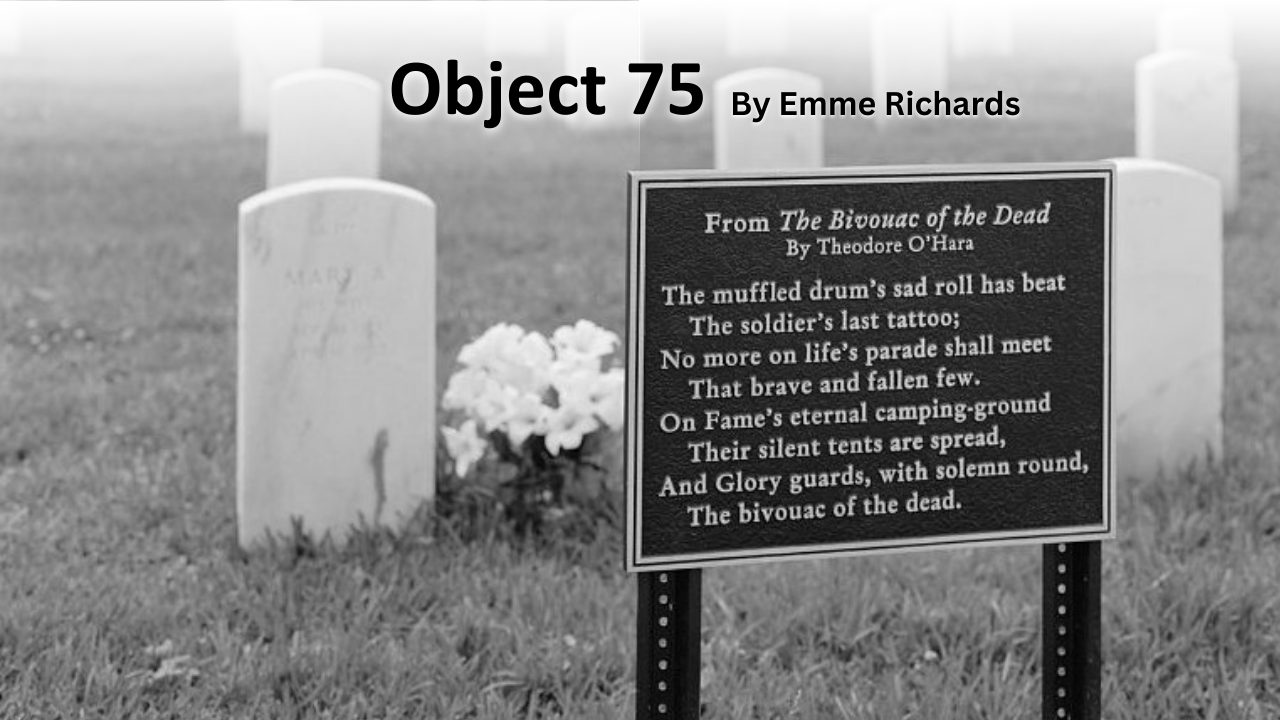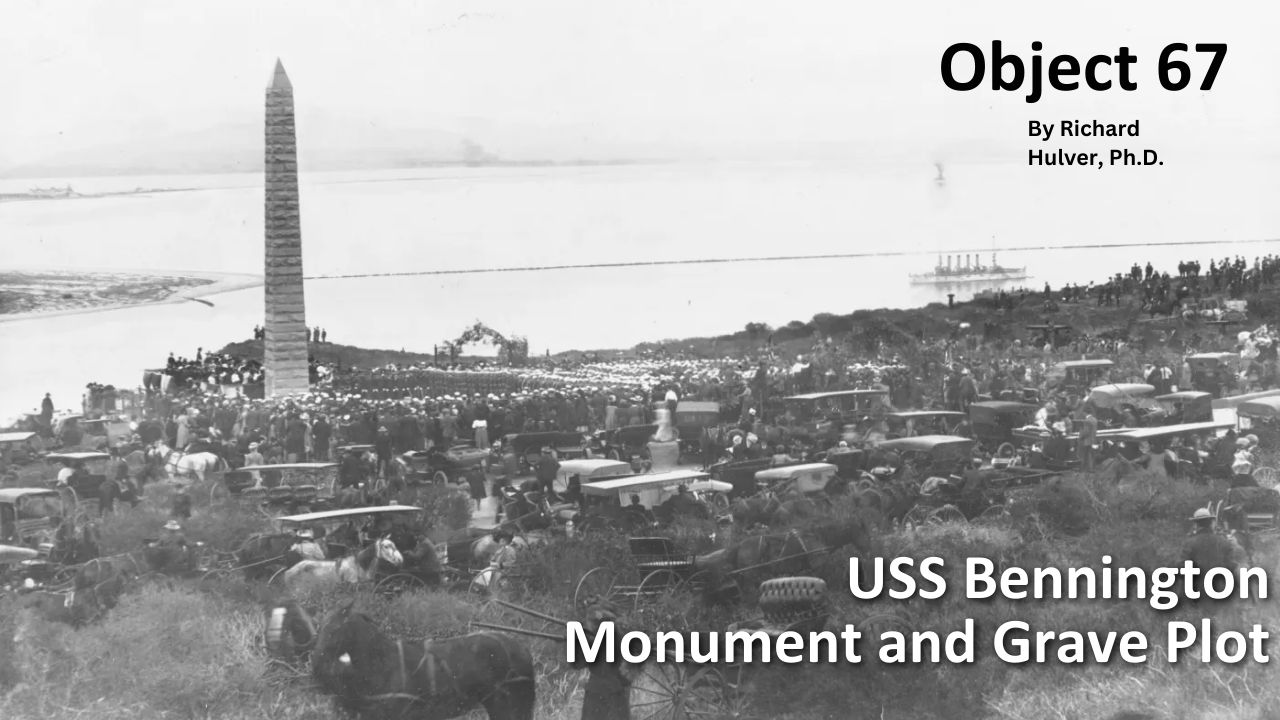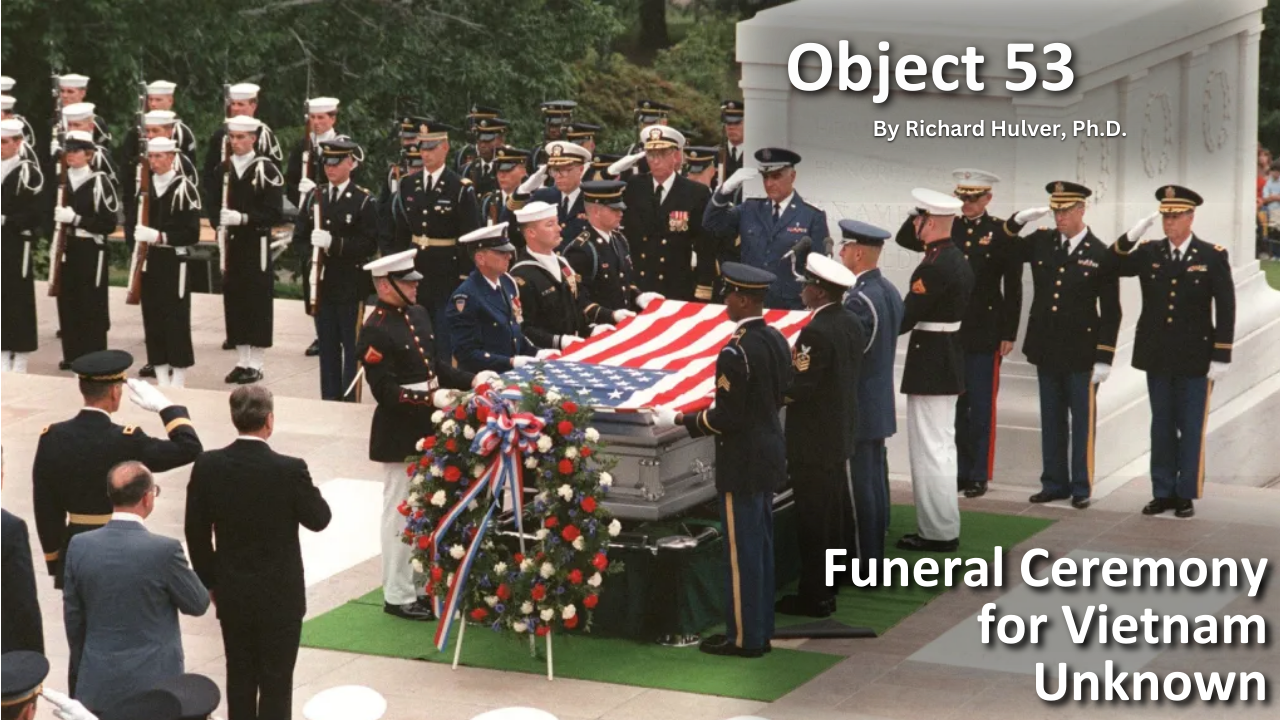
History of VA in 100 Objects
Object 78: French Cross at Cypress Hills National Cemetery in Brooklyn
In the waning days of World War I, French sailors from three visiting allied warships marched through New York in a Liberty Loan Parade. The timing was unfortunate as the second wave of the influenza pandemic was spreading in the U.S. By January, 25 of French sailors died from the virus.
These men were later buried at the Cypress Hills National Cemetery and later a 12-foot granite cross monument, the French Cross, was dedicated in 1920 on Armistice Day. This event later influenced changes to burial laws that opened up availability of allied service members and U.S. citizens who served in foreign armies in the war against Germany and Austrian empires.

History of VA in 100 Objects
Object 75: “Bivouac of the Dead” Tablet
The mounted plaque stands in front of the headstones at Mobile National Cemetery in Alabama. The dark, cast-aluminum tablet draws a stark contrast to the sea of pearly marble beyond. Across its face in white lettering runs the sorrowful first stanza of Theodore O’Hara’ elegiac poem, “Bivouac of the Dead,” beginning with the verse “The muffled drum’s sad roll has beat / The Soldier’s last tattoo; / No more on life's parade shall meet / That brave and fallen few.” Tablets bearing passages from O’Hara’s poem can be found in dozens of VA national cemeteries across the country. Originally written to honor the Kentucky volunteers who died in the Mexican War (1846-48), the poem now serves as a literary memorial to all lives lost in service to the nation.

History of VA in 100 Objects
Object 71: Dade Pyramids And Monument
On the south side of Florida’s St. Augustine National Cemetery, three squat pyramids and a single taller obelisk rise from the ground above the other nearby markers and headstones. The Dade Pyramids and Monument, as they are known, mark the resting place of the U.S. soldiers who died in the opening engagement of the Second Seminole War (1835-42). The memorial honors lives lost while also serving as a grim reminder of the brutal conflict that erupted when the Federal government tried to evict the Seminole people from their tribal lands in Florida.

History of VA in 100 Objects
Object 67: USS Bennington Monument And Grave Plot
On July 21, 1905, one of the USS Bennington's boilers exploded, killing 49 sailors. Almost immediately after the accident, surviving crew and fellow sailors donated funds to build a monument at the grave site for their fallen comrades. This burial ground would later become Fort Rosecrans National Cemetery.

History of VA in 100 Objects
Object 58: Congressional Cemetery Cenotaphs
Congressional Cemetery occupies 35 acres of land in the southeast section of Washington, DC, and has served as the final resting place for scores of elected officials and notable Washingtonians. The more than 60,000 gravesites include 806 maintained by VA. Some 168 of the VA sites are adorned with one of the most distinctive markers to be found in the cemetery—the iconic cenotaphs designed by Benjamin H. Latrobe, the nation’s first professional architect.

History of VA in 100 Objects
Object 55: Dorothea Dix’s Monument to Union Soldiers
On May 12, 1868, Dorothea L. Dix at last had the satisfaction of transferring to the Army ownership of the monument she helped finance and shepherd to completion. Dedicated to “Union Soldiers who perished in the War of the Rebellion,” Dorothea Dix's monument was a 65-foot-tall granite obelisk erected in Hampton National Cemetery in Virginia near the large Civil War hospital at Fort Monroe.

History of VA in 100 Objects
Object 53: Funeral Ceremony For Vietnam Unknown
After a 26 year journey from the Vietnam Unknown memorial to St. Louis, Missouri, a casket containing the remains of 1st Lt. Michael Blassie was interred in Jefferson Barracks National Cemetery in his hometown on July 11, 1998.


